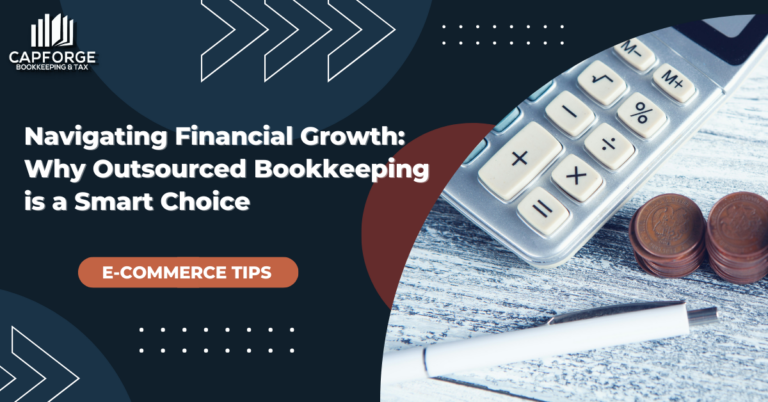The Pros and Cons of Dropshipping
If you’re planning on entering the e-commerce space, then you’ve probably heard of dropshipping. Dropshipping is a popular retail fulfillment method that allows you to start an online business right in the comfort of your own home. If you look at the analytics on Google Trends, the search terms for dropshipping have maintained a steady interest over time. Understanding the pros and cons of dropshipping is key to being successful in a competitive landscape such as this.
According to Fundera, dropshipping is expected to grow by 28.8 percent in the next couple of years, which makes it that much more appealing. But what exactly is dropshipping? What are the pros and cons of this type of fulfillment method? In this article, we’ll discuss everything you need to know about dropshipping so that you can determine whether this business model will work for you.
What is dropshipping?
Simply put, dropshipping refers to selling a product that’s manufactured and managed by a third-party entity. You, the seller, act as the storefront to the customers. When a customer places an order, you forward their details to the manufacturer. The factory then ships the product to the customer’s address. You don’t have to worry about managing inventory or handling the actual products themselves.
Being able to sell products online without dealing with stocks, inventory, or order fulfillment is a dream for most people. That’s the main appeal of dropshipping. It’s hassle-free, and you get to dip your toes in the world of e-commerce without the usual stresses of opening an online store.
But there’s more to dropshipping than just selling products on a website. To make sure dropshipping works for you, you should evaluate the pros and cons that come with this business model. Let’s discuss both of those in detail down below.
The advantages of dropshipping
The beauty of dropshipping is that you don’t have to go through the rigmarole of traditional online selling. Because the manufacturer ships directly to your customers, you don’t have to acquire stock or store inventory. You also skip the costs of manufacturing a product to sell online.
Here are the pros of starting a dropshipping business:
1. Minimal startup costs
As you know, starting an online business requires significant resources. You have to build inventory upfront, maintain a physical presence, and invest in marketing strategies to get your name out there. With dropshipping, you get to create an e-commerce store without dealing with the costs typically associated with it.
Small businesses find dropshipping to be an ideal business model because of the low financial risk. They have nothing to lose and everything to gain by selling products online.
2. Eliminates the need for a physical warehouse
Retailers usually pay the production costs upfront, wait for the products to arrive, and stock them in a physical warehouse before they can start selling. There’s a huge financial risk involved because you’re stocking volumes of products that may or may not sell to your customers.
Dropshipping solves this problem by eliminating the need for a physical warehouse. The third-party entity is in charge of the inventory management, meaning you avoid the storage and handling costs. The great thing about dropshipping is that the third-party entity is in charge of managing stock, giving you one less thing to worry about.
3. Offer a wide selection of products
Considering that dropshipping does not involve inventory management, you are free to choose which products to sell to your customers. This keeps your overhead low, and you won’t be forced to mark down items that don’t sell to the public.
Dropshipping helps you stay on top of product trends. If you plan on switching to a new product, you can simply offer new items without needing to clear your backstock. With dropshipping, you can cater to a wider audience than you would with a traditional online store.
4. Run your store from virtually anywhere
Dropshipping frees you from the constraints of running a physical store. As long as you have a laptop and an internet connection, you can sell products online regardless of your location.
5. Streamlined cash flow
Dropshipping lets you earn money the moment your customer places an order. This frees up your monetary resources, allowing you to allocate those funds to building your website or social media presence. Dropshipping is also great at generating passive income as the orders are fulfilled automatically.
Even if you’re less involved with your business, you can still find ways to earn money with dropshipping.
The disadvantages of dropshipping
Not everything is rainbows and butterflies when it comes to dropshipping. While it can be beneficial for startup owners, dropshipping comes with its downsides. You have to assess the disadvantages of dropshipping to determine whether it’s a sustainable business strategy for you.
Here are the cons of dropshipping:
1. Competition is stacked
Because the barrier of entry in dropshipping is low, you can expect the market to be flooded with the same products you’re selling. It’s hard to differentiate yourself from the competition when you’re sourcing products from the same third-party manufacturer like everyone is. This makes acquiring customers difficult, especially if you choose to sell a product that’s saturated in the e-commerce space.
2. Inventory problems
While third-party entities do their best to ensure product availability, it won’t always be smooth sailing. If your manufacture runs out of stock, there’s very little you can do about it. You can’t guarantee that the products are 100% available. Unlike managing your inventory, you can feel confident that inventory problems won’t be recurring issues.
3. No control over the products
This is perhaps the biggest downside of dropshipping. You don’t have the opportunity to evaluate the condition of the products you’re selling. As we all know, credibility is key to building a successful e-commerce business. With dropshipping, you’re betting on the third-party entity to deliver high-quality products on time.
Putting your brand’s reputation in someone’s hands isn’t the best way to build a credible business. If the product is delivered late or defective, the error will reflect on your business. Thus, building consumer trust is hard to achieve when you decide to go the dropshipping route.
4. Shipping issues
Remember how we said product flexibility is an advantage of dropshipping? Well, it could potentially be its downfall as well. When you work with multiple suppliers, you face disjointed orders where customers receive different packages. This makes shipping costly and contributes to wasteful packaging that impacts your brand reputation.
5. Pricing dilemmas
Since you’re selling the same products as most other stores do, the only way to differentiate your store is through pricing. But dropshipping has become a race to the bottom where sellers have lowered their prices to a point it becomes unprofitable. What happens is you end up selling inventory at extremely low prices, so much so that you end up losing money in the long run.
Tips on running a successful dropshipping business
Succeeding in a highly competitive landscape can be challenging. But with the right approach, you can make dropshipping work for you. These five tips will help you run a business model that generates profit and minimizes losses.
- Focus on specific products: Just because you can sell any product you want, it doesn’t mean you should. Good dropshippers know that a marketable product is crucial to succeeding in the e-commerce space. Conduct market analysis and find out which products are trending. You want to sell a marketable product, is quick to ship, and is hard to find locally for your target audience.
- Enhance the shopping experience: Aside from price, one way to differentiate yourself from your competitors is through the customer shopping experience. Make sure your website loads fast and is easy to navigate for your customers. Provide them with multiple payment options and ensure their products are delivered on time. As you gain the trust of your consumers, you’ll be able to find success in the dropshipping space.
- Don’t be afraid to cut ties with your supplier: Keep in mind that your brand’s reputation relies on the supplier you’re working with. If the supplier fails in quality control or delivery times, don’t hesitate to cut ties and look for a new manufacturer. Knowing how to evaluate suppliers is key to succeeding as a dropshipper, so vet your manufacturers thoroughly.
- Offer superior customer service: Customer service is the hallmark of a well-established online business. Be clear with your shipping times. Have a FAQ page on your dropshipping store. Be swift with your response times. When you take care of your customers, they will take care of your business.
Conclusion
Dropshipping isn’t for everybody. You need to weigh the pros and cons of dropshipping to figure out if you want to enter this type of business model. When done correctly, dropshipping has the potential to generate passive income and help you establish a successful e-commerce store.
If your online business is in need of bookkeeping services and would like to break down the financial status of your company, we are here to help. Simply fill out the form below and we’ll reach out to you as soon as possible.








